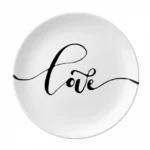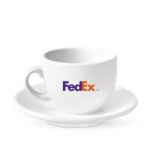Crockery for Food and Beverage Service
Crockery for food and beverage Service must blend in with general decor of the establishments and also with the rest of the items on the table. An establishment generally uses one design pattern of crockery, but when an establishment has a number of different service areas it is easier, from the control point of view, to have a different design in each service area.
Classification of different Types of Crockery
- Bone china
- Porcelain
- Earthenware
- Stoneware
- Alumina
- Melamine
- Terracotta
Bone china
Bone china is porcelain made of clay mixed with bone ash. This is very fine, hard china that is very expensive. The decorations are to be found under the glaze only. The price of bone china puts it out of reach of the majority of everyday caterers, and only a few of the top-class hotels and restaurants would use it. The range of design, pattern and colour is very wide and there is something to suit all occasions and situations.
Porcelain
Porcelain is a ceramic material made by heating selected and refined materials, which often includes clay of kaolinite clay, to high temperatures. The raw materials for porcelain, when mixed with water, form a plastic body that can be worked to a required shape before firing in a kiln at temperatures between 1200°C and 1400°C. The toughness, strength, and translucence of porcelain arise mainly from the formation of glass at high temperatures and the mineral malate within the fired body.
Earthenware Crockery
Earthenware may sometimes be as thin as bone china and other porcelains, though it is not translucent and is more easily chipped. Earthenware is also less strong, less tough, and more porous than stoneware, but its low cost and easier working compensate for these deficiencies. Due to its higher porosity, earthenware must usually be glazed in order to be watertight.
Stoneware Crockery
Stoneware is hard pottery made from siliceous paste fired at high temperature to vitrify (make glassy) the body. Stoneware is heavier and more opaque than porcelain. The usual colour of fired stoneware tends to be greyish, though there may be a wide range of colours, depending on the clay. It has been produced in China since ancient times and is the forerunner of Chinese porcelain.
Alumina Crockery
Alumina enriched crockery can normally be spotted due to its creamy colour. Alumina is an oxide of aluminium which is added to the clay to give it additional strength. Though the addition of alumina makes the crockery more expensive than standard porcelain, it is generally cheaper than bone china, making it a popular alternative.
Melamine Crockery
Melamine is a strong, lightweight and hard thermosetting plastic. It is used as an ideal hygienic and durable alternative to china. It is virtually unbreakable so is considered for daily use and it can also resist scratching, staining and is dishwasher safe.
Terracotta Crockery
Terracotta is a traditional Spanish material often used in both oven & tableware. It has unique properties that react with acidic foods such as tomato sauce, giving natural sweetness to the meal. Its colour can instantly be recognised and is often associated with Mediterranean cooking.
Types of Crockery
Different types of crockery & their sizes
1. Quarter Plate 15cm D Used to keep bread, cheese or as an underliner It is also known as B&B Plate (bread & butter, underplate, side Plate
2. Half Plate 20 cm D Used to serve starters, pasta, dessert, fish etc It is also known as a dessert plate, fish plate
3. Full Plate 25cm D Used to serve the main course It is also known as a dinner plate, joint plate, meat plate.
4. Soup bowl 250ml Used to serve soup, breakfast cereals
5. Soup cup 250ml Used to serve thin soup It is also known as consommé cup & has two handles.
6. Soup Plate 20 cm D Used to serve both thick & thin soup The half plate is used as an underliner. It’s not in use nowadays.
7. Breakfast cup 240-300 ml (8-10 Fl oz) Used to serve all Tea & coffee during breakfast
8. Tea Cup 200 ml (6^2/3Fl oz) Used to serve tea during the day
9. Coffee cup 97-100 ml Used to serve coffee after lunch or dinner It is also known as demi-tasse.
10. Dessert plate 18 cm D used for the service of desserts.
11. Cereal Bowl 13 cm D used for the service of cereals (cornflakes, wheat flakes, choco flakes, etc), puddings, compotes
12. Cheese plate 16 cm D used for the service of cheese and biscuits
Other types of chinaware
- Salad cresent
- Egg cup
- Ashtray
- Creamer
- Coffee/teapot
- Sugar basin
- Milk jug
Points to be considered while purchasing crockery
- Type of service being offered
- Crockery Design
- Flexibility and use of the crockery
- Durability of the crockery
- Ease of maintenance of the crockery
- Stack-ability of the crockery
- Availability in the future-replacements of the crockery if rquired
- Storage of the crockery
- Shape of the crockery
- The psychological effect on your restaurant customers
Points should be considered while selecting the chinaware
- Plates should have complete and even glaze.
- Pattern or design should be under glazed so that it is protected and does not wear out with repeated washing.
- Suitable for multiple purposes, for example, using bowls for soups and breakfast cereals, half-plate for the appetizer, fish, vegetables, savory, and sweet.
- Stack able up to 30 plates or saucers in one pile.
- The crockery is suitable for machine washing.
- Plates should have rolled edge to resist chipping.
- Lightweight.
- The crockery should be suitable for microwave application.
- The crockery should be resistant to high temperatures of 85 °C.






